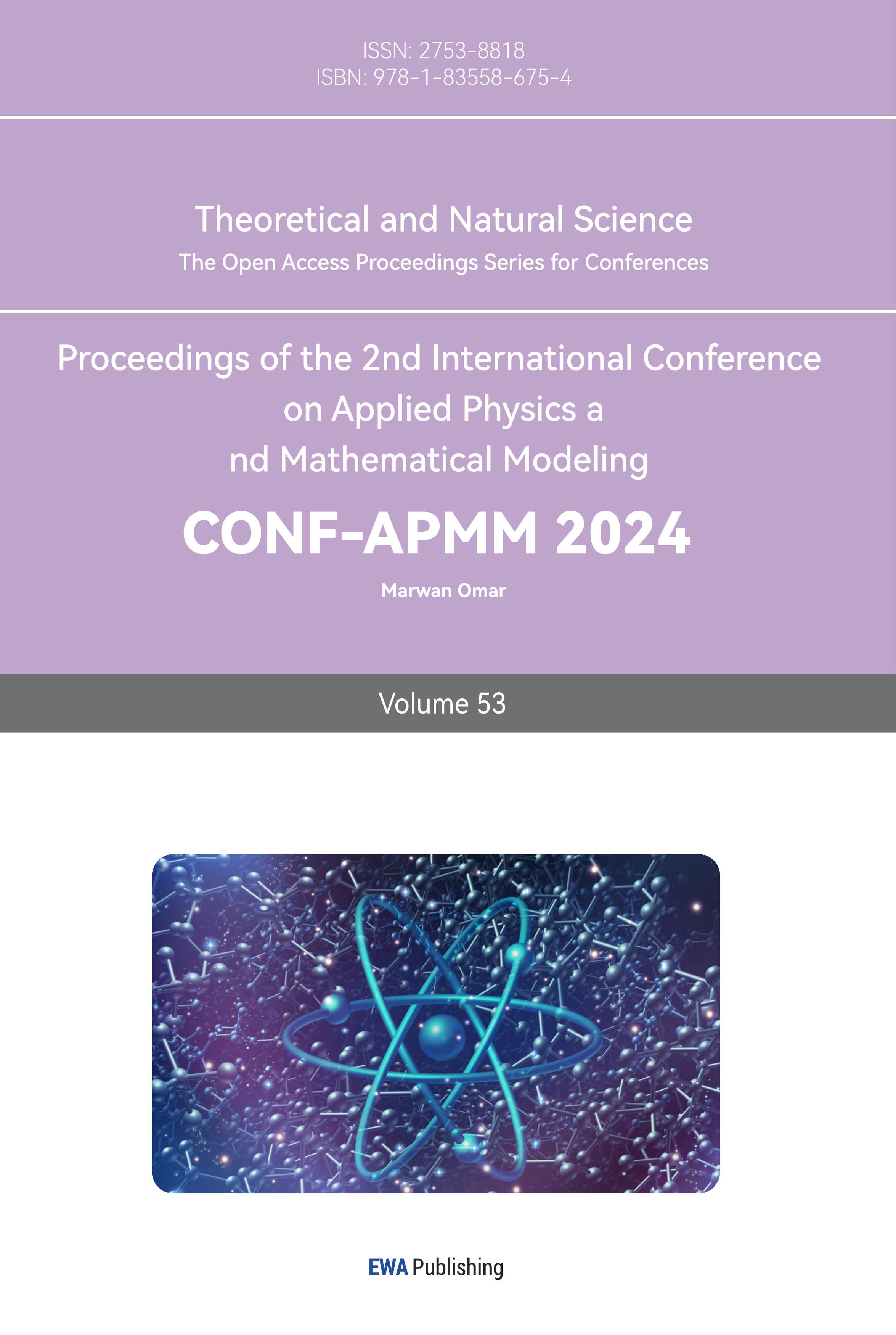1. Introduction
1.1. Historical evolution and modern technological development
The design of the F1 front wing has evolved and developed over the years. Early front wing designs (shown in figure 1) were relatively simple and focused on increasing downforce and reducing drag. With the continuous advancement of racing technology and the constant adjustment of rules, the front wing design has gradually become more complex and optimized. The design of the front wing of the modern F1 racing car needs to provided stable structural characteristics, such as the use of multi-stage airfoils, adjustable angles of attack, and installation position design. Targeted design features can they adapt to the needs of different tracks and competition conditions.
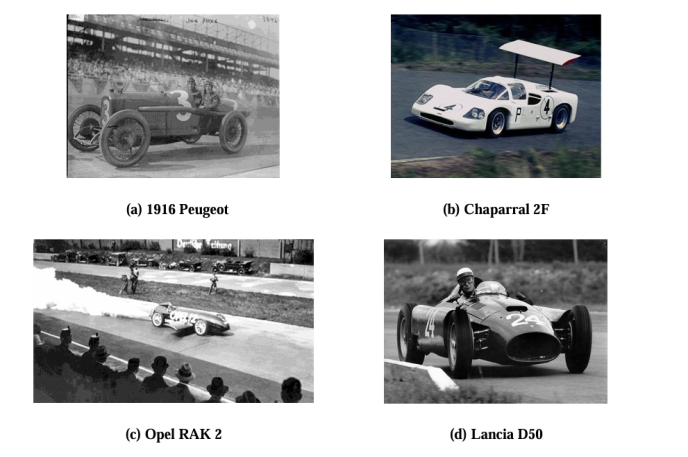
Figure 1. Taken from [4] shown four different types of Peugeot, Chaparral, Opel RAK and Lancia cars
In recent years, with the emergence of new materials and new technologies, the front wing design has exhibited new trends. For example, the use of advanced composite materials and manufacturing processes can improve the strength and stiffness of the front wing while reducing its weight. By using intelligent sensing and control systems, real-time adjustment and optimization of the front wing can also be achieved to further improve the performance of the car [1].
1.2. The aerodynamic and design of F1 front wing assembly
The front wing is one of the most prominent and eye-catching features on F1 racing cars. It is 1.8 meters wide and provides approximately one-third of the vehicle's down force, as well as the main down force on the front wheels. As the front wing is the first component in contact with the airflow, its shape will affect the direction of the airflow along the entire vehicle. The width of the front wing keeps it in front of the front wheels, and the wing surface allows the airflow to bypass the front wheels as much as possible, thereby reducing drag. Although the front wing has the ability to generate greater down force, its main purpose is to balance the rear down force generated by the diffuser and tail wing. Therefore, teams generally adjust the settings of the front wing based on the driver's preference for handling balance. The main part of the front wing is very complex and can be composed of multiple wing components. There are many overlapping relationships between sub-boards, which require high appearance clearance, surface quality, and complex shapes. The fins of the front wing are usually designed with specific shapes and angles to maximize the generation of down force. The curvature and angle of the fins can affect the flow path of the airflow, resulting in the required downward force. Corrugated fins can increase the length of the air channel, fully mix the airflow, change the direction of the airflow, increase the air heat exchange area, and enhance fluid disturbance.
In contrast, the rear wing only has three components, two of which are on the upper level, which one is on the lower level. The main function of the main wing and flap of the car is to increase downforce to improve the handling and stability of the car. The main wing and flaps are an important part of the car, and they increase downforce by forming a large angle with the oncoming airflow. This design helps the car to fit the ground better at high speeds and improve the handling and stability of the car. Especially in high-speed cornering, the increased downforce helps to reduce the sideslip of the car and can improve its handling and safety. The design of the flaps are more complex, usually broken down into separate components with slots between them to ensure that the airflow remains attached to the wing’s surface. This design allows the fins to be more aggressive, resulting in more downforce. By increasing the number of components and slots, the flap design can be more flexible to accommodate different track conditions and driving needs.
Additionally, the airflow is separated when it comes into contact with the leading edge. A small amount of air flows through the gap between the main wing and the second-layer flap, through which high-speed air flow is obtained. This airflow management helps to improve the performance of the car, maintaining its stability at high speeds, while improving the speed and handling of the car.
Few types of front wings have been introduced throughout the years. They can be divided into two main groups, namely the straight wing and the curved (U-shaped) wing. The typically front wing structure of automobile can be seen in figure 2 [2]. The difference in performance and flow structures between the two types of wings were experimentally investigated using scaled models with six-axis load cell, dye flow visualization and PIV. Moreover, an actual scaled wing model on track conditions with moving ground was examined using computational fluid dynamics (CFD). The effect of ground clearance on the generation of downforce and drag for both wings were also studied. In general, a straight wing performs better than a curved wing, which generates more downforce. This includes rolling resistance, acceleration resistance, slope resistance and air resistance in resistance.
In racing, it is essential for every component of thevehicle to be designed with the efficiency of the vehicle in mind. By conducting numerical analysis on font wings of three new single-seat cars that comply with the 2022 season regulations released by the International Federation of Automobile Manufacturers (FIA) [3], a new design as well as a 3D-printed front wing prototype were produced. The experiment showed that aerodynamic efficiency can be achieved by minimizing the relationship between resistance and downforce, which allows the vehicle to be close enough to the ground.
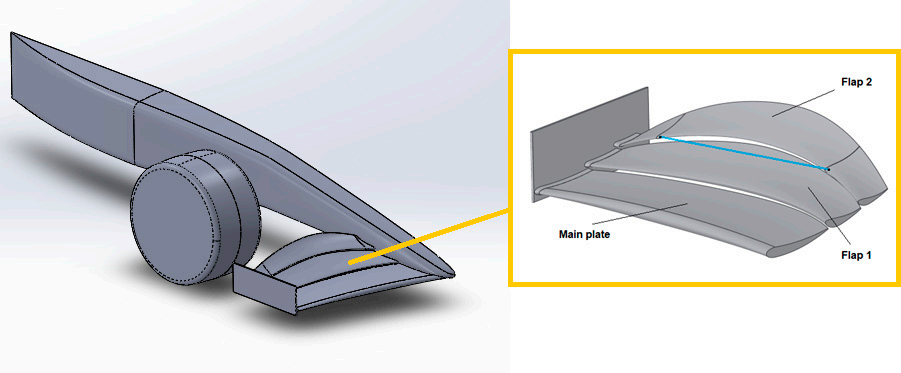
Figure 2. Taken from [16] shown front wing structure of automobile
F.J. Granados-Ortiz [5] used 3D simulation technology to analyze and optimize the interaction between the front wheels and brake pipes of a racing car. The detail of the full 3D geometry of front wing is presented in figure 3. The brake pipes are part of the car's aerodynamic package, which not only provides cold air to the braking system but also plays a very important role in generating downforce [6]. They used 3D simulation to create a virtual racing model and computational fluid dynamics (CFD) software to simulate how air flows past components such as the front wheels and brake pipes, predicting airflow velocity, pressure, and temperature distribution. The model and software can also identify the optimal aerodynamic configuration. In addition, the interaction between the front wheels and brake pipes was simulated for drivers during high-speed turns or emergency braking conditions. The computational results indicated by figure 4 show that both front wings are good candidates for real competition, as their downforce greatly outperforms drag, and they are able to generate important vortical structures such as the Y250 vortex.
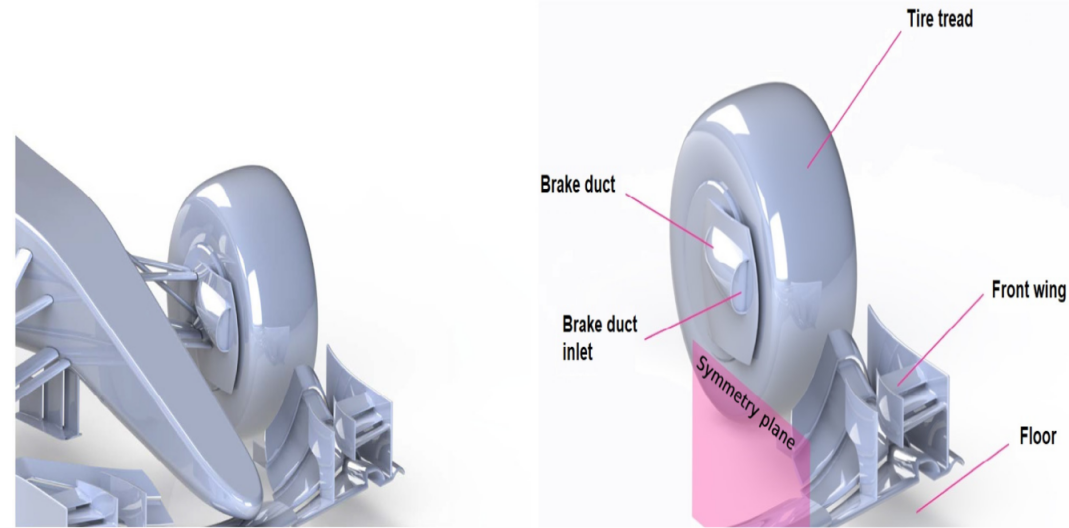
Figure 3. Taken from[5], showing detail of the full 3D geometry of front wing
2. The role of the front wing in F1 racing cars
2.1. Down force generated by of the front wing
The down force of an F1 racing car refers to the vertical force generated by aerodynamic effects during high-speed driving, which makes the car adhere closer to the track surface, thereby improving grip and control ability. This force allows the driver to gain more grip on the track without losing control of the vehicle when cornering at high speed. The generation of downforce is achieved via the front wing, rear wing, side box, bottom plate, wind deflector, small wing, and wheel cover. The main function of downforce is to improve the adhesion between the car and the ground [7]. Not only is the lower part of the fuselage affected by the upstream front wing, but the presence of the lower part of the fuselage also has a profound impact on the front wing. When the upper and lower parts of the fuselage interact with the front wing, a significant amount of downforce is lost. When the car is running at high speed, the pressure on the bottom of the car is much less than that on the side and upper part, which leads to an increase in the downforce generated. A sketch analysis of the cross-section along the front wing spoiler was illustrated in Figure 5. As the lower part of the fuselage interacts with the upstream front wing, more downforce is generated; the closer the contact with the surface, the higher the turning speed. Higher downforce enhance the vehicle's maneuverability, making it easier for drivers to control and improve its braking performance. This enhances stability during braking, also enables drivers to stop safely at shorter distances [8]. On the other hand, too much downforce will increase air resistance, which will affect the straight-line speed of the racing car. Therefore, it is necessary to balance pressure and resistance. Increasing the number of fins or changing their layout can affect the distribution and magnitude of downforce, therefore designers will adjust the number and layout of wings based on the specific needs and track conditions of the racing car.

Figure 4. Taken from [5], shows the resulting 3D five-element front wing from the hybrid optimization approach. a) Optimal front wing using the adjoint method (hybrid approach). b) Comparison by superposition between parametric (green) and adjoint-based (blue) front wings.
2.2. Drag generated by the front wing
The resistance faced by F1 vehicles is one of the key factors affecting their performance and mainly consists of air resistance, rolling resistance and frictional resistance [9]. Among these, air resistance is the main form of resistance, which is proportional to the square of speed. The increase in the speed of the car and the windward area can often lead to a sharp increase in air resistance. The curves of racing cars are usually streamlined to increase surface smoothness, which can reduce air resistance [10]. Rolling resistance is the resistance generated by the contact between the tire and the track surface, which is related to the material, pressure, temperature, and track conditions of the tire. Rolling resistance is usually significant at low speeds but relatively small during high-speed driving in F1 racing cars. Frictional resistance comes from the friction between mechanical components inside a racing car, such as the engine, gearbox, bearings, and suspension system [11]. Rolling resistance can mainly come from surface friction, pressure difference, wake and turbulence, the number and layout of fins, as well as material and weight of the car. The unevenness of the fins and the optimization of their shape and angle can not only increase surface friction but also reduce pressure drag. Adding deflectors and other accessories to the front wing can improve airflow adhesion, although excessive fins may cause airflow turbulence.

Figure 5. Taken from [5] showing a sketch analysis of the cross-section along the front wing spoiler
2.3. Airflow management of the front wing
The airflow management of the front wing is a key component in the aerodynamic design of racing cars, and how to effectively control the airflow around the car. Front airflow management is achieved through the front wings and guide vanes, which not only generate downforce but also guide the airflow through other parts of the car [12]. The guide vanes can help direct the airflow to the side box and other dynamic components. The management of central airflow relies on side boxes and air deflectors. The main role of the sidepods and air deflectors in airflow management is to manage the airflow on the side of the body, preventing important aerodynamic packages such as floor diffusers and beam wings from being disturbed. The front wing is usually composed of multiple fins arranged at specific angles and directions, which can control the direction and velocity of the airflow. In general, the front wing is equipped with deflectors and flaps to further refine airflow management. Clean air is when an F1 car is free from rivals, interference on a track(shown in figure 6). The training car will be subject to turbulent air that reduces the aerodynamic performance of the car. Setting a suitable airflow outlet on the front wing can be used to control the wake, hence improve the trailing ability of the following car, and enhance the intensity of the competition. Effective airflow management can generate more downforce, improve the car's grip and cornering stability. It can also provide enough cold air to enter the radiator, dissipate heat and prevent overheating, thus improve fuel efficiency.
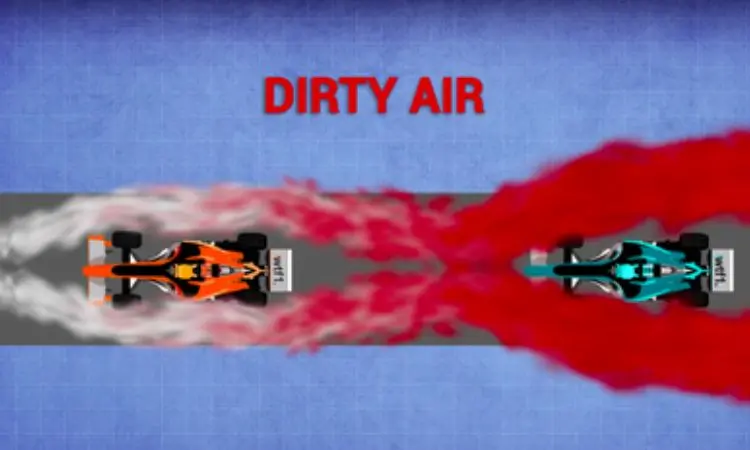
Figure 6. From [13] showing the generation of dirty air.
2.4. The adjustability of the front wing
The front wing is composed of multiple components, including the main plane, flaps, end plates and auxiliary fins. Among these, flaps are the most frequently adjusted part because they directly affect the generation of downforce and the way air flows to other sections of the vehicle. The adjustability of an F1 racing car refers to its ability to optimize performance by adjusting various components and settings during a race or under different track conditions. The angles of the front and rear wings can be adjusted to change the level of downforce. The direction and speed of the airflow can be adjusted to affect the air pressure difference. On tracks that require high-speed straight lines, downforce may be reduced to decrease resistance; on multi- curved tracks, it is possible to increase downforce to improve grip. In addition, the design of the front wing also involves optimizing airflow, reducing air resistance, and improving the aerodynamic efficiency of the car through specific wing and angle design. Through the optimization design of the curved wing, the downforce of the whole vehicle can be increased, and the cornering speed and braking stability of the racing car can be improved. This shows that the front wing design is not only related to the aerodynamic performance of the car, but also directly affects the overall racing performance of the car [14].
2.5. Ground effect
In F1 racing, ‘ground effect’ refers to the aerodynamic effect between the bottom of the car and the ground, which can generate large amount of downforce without significantly increasing air resistance. It is mainly achieved through the Venturi channel at the bottom of the racing car, which can effectively work with the diffuser. The front wing is mainly used to manage the airflow at the bottom of the racing car, ensuring that the airflow can freely enter and exit the bottom of the car. If the front wing design is flawed, the airflow will become turbulent, resulting in downforce loss and reduced maneuverability. Although the design of font wing does not directly generate ground effects, it indirectly affects aerodynamic kits. This can reduce air resistance increase the intensity and viewing performance of the competition.
3. Development process of front wing designs
3.1. Front wing mode for the 2022 reason
The 2022 season marks an important turning point for Formula One racing through the introduction of introducing more ground effect designs. Ground effect increases the ground contact of the racing car, thus improving the grip of the wheels. In F1 racing cars, the ground effect shapes the bottom of the car, allowing air to flow through the chassis at high speed. According to Bernoulli's principle, a low-pressure area is created under the body, which interacts with the air flowing over the body to produce a strong downforce, allowing the car to pass through corners at high speed. Aerodynamic packages play a vital role in the design of F1 cars, where by optimizing the aerodynamic performance of the car, they help the car to reduce air resistance and increase downforce at high speed, thus improving the handling and speed of the car. In addition, the width of the car body has also increased, and aerodynamic packages such as the front air dam, rear spoiler side spoiler, and adjustable rear wing have been studied and optimized. This allows the vehicles to better adapt to aerodynamic design hence improve their safety performance and ensure the safety of the driver. F1 implemented a series of significant technical rule reforms aimed at improving the competitiveness of the race, particularly by adjusting the speed at which the vehicle follows and the ability to overtake in corners [15]. These rules strictly limit the front wing design. The front wing provides more adjustability, which can be modified when faced with extreme conditions or emergency braking. For example, front wing can optimize the wake, which helps to improve the following ability of the rear car and make it more competitive. In the design of the front wing, a washout layout is adopted. This arrangement is not only implemented near the vertical endplate on both sides of the front wing, but also at places such that they produce vortices on the upper edge of the front wing, which helps to better suppress the turbulence of the front wheel, and thus lead to an enhanced washout effect. At the same time, the design of the front wing in 2022 is more simplified compared to previous versions, with fewer fins to reduce the generation of turbulence.
3.2. Comparative analysis of the front wing design of different teams
External aerodynamics is one of the factors that affect key performance in F1. An improvement of only 1-2% can lead to race results that determine the difference between first and tenth place. For racing cars, the front wing is a key aerodynamic component. Drag and lift act on the front wing respectively; lift mainly reduces the grip, so the front wing is usually designed for negative lift, while drag is the interaction of the car with the horizontal force (usually provided by wind). Designing high-performance front wings take two criteria into consideration: reducing drag and increasing downforce. From an aerodynamic point of view, the front wing affects the take in air of the car and its stable adhesion to the ground. Literature on front wing testing and design is scarce, most likely due to the competitive nature of motorsport.
In the 2022 Formula 1 season, the major teams have presented different styles and characteristics in front wing design. For example, the front wing design of the Red Bull RB19 focuses on reducing the weight of the front part of the car. It creates more downforce in the middle and front part by using larger undercuts and smaller flap attack angles while reducing the downforce proportion and drag generated by the front wing. This design takes into account Verstappen's driving style, which tends to oversteer, by setting a gap between the nose cone and the main wing to improve airflow consistency and the airflow quality at the floor bib.
Ferrari SF23's front wing design is trapezoidal; the upper edge of the top flap has a larger angle of attack on the inside of the tire. A gurney is added to increase downforce. Ferrari's front wing is similar to Red Bull's, but the area between the nose cone and the main wing is designed differently to try to get more load from the front wing, especially in low-to-middle-speed corners.
Mercedes has a distinctive front wing design with hump-like protrusions creating lateral airflow, narrow sidepod air intakes, and gaps between protrusions and nose cone that flow into the interior of the sidepods. This design is very different from other teams, but it does not mean it is wrong because the front wing design needs to match the overall car. In addition, McLaren and Alfa Romeo have a front wing design similar to the Alpine's, with Gurney flaps also on the outside of the front wing. This helps stabilize specific areas of the front wing when the front wheels are turned and provides additional downforce.
3.3. Advantages and disadvantages and effectiveness of front wing design
The Mercedes team's front wing design, while outstanding in terms of stability, is slightly lacking in speed and flexibility. Red Bull's front wing design is based on adapting to Verstappen's driving style. The upper edge of the top flap is almost horizontal, and the edge near the end plate is slightly downward. Based on the angle of attack of the flap, it is almost the lowest pressure setting. This design takes more account of the front of the car, aiming to create more downforce in the middle and front. It can reduce the proportion of downforce generated by the front wing and drag through greater undercutting and a smaller flap attack angle. This design helps to improve the handling of the car in oversteer situations but may cause airflow separation when braking, affecting the quality of airflow.
The trapezoidal design of Ferrari's front wing allows the upper edge of the flaps to have a larger angle of attack on the inside of the tire. The upper edge of this part is horizontal, and a gurney is added to increase downforce. This design added more load from the front wing, especially in low- and medium-speed corners. This radical approach, while trying to improve the car's grip and handling by increasing downforce, may also affect aerodynamic efficiency in high-speed situations.
The design of the front wing can largely determine the design philosophy of the whole car. As the first working aerodynamic package of the car, the front wing design is crucial to the overall performance of the car. Different design concepts will lead to different performances of the car in different track conditions. For example, some designs focus more on stability and downforce at high speed, while others focus on improving the flexibility and handling of the car.
The effectiveness of the front wing design is mainly reflected in its impact on the car's aerodynamic performance. An excellent front wing design can effectively manage airflow, improve downforce and handling of the car, and thus help the car achieve better results in various track conditions. However, small differences in design can lead to significant changes in the car’s performance, so teams need to constantly adjust and optimize the front wing design to adapt to changing race conditions and rules.
In conclusion, the front wing design of different teams has its own merits and drawbacks. The core of the design is how to maximize the car's aerodynamic performance while ensuring its stability and handling. The car's performance depends not only on the design of a single component but also on the synergy of the aerodynamic package and chassis design of the whole car.
3.4. Front wing mode 2026
The specific design and technical specifications for the front wing of the 2026 F1 racing car are still under discussion or development. The design change is part of an update to the 2026 F1 racing rules, which aims to improve the agility and safety of the car. Specifically, the changes to the front wing include the introduction of a variable front wing to make overtaking more possible. This design allows the front wing to be tuned to race conditions to optimize aerodynamics for improved downforce and stability of the car. In order to reduce air resistance and improve the agility of the car, the 2026 F1 car will have a narrowed front wing design. This design not only helps to improve the handling of the car, but also reduces the interference to the rear car to a certain extent, thus improving the competitiveness of the race. In addition to the front wing changes, the 2026 F1 car will also use a three-layer variable rear wing to further optimize the aerodynamic performance of the car, improve the stability and handling of the car. In order to reduce the need for ultra-rigid suspension and low ride height settings, the 2026 F1 car will also feature a simplified floor and low-power diffuser design(shown in figure 7). These alterations are designed to reduce ground effect and thus improve the overall performance and safety of the car. The updates to the technical specifications are important adjustments made by F1 to adapt to the new hybrid system and improve the viewing of the race. Through these changes, F1 hopes to provide a more level playing field for drivers and a more exciting race experience for spectators.
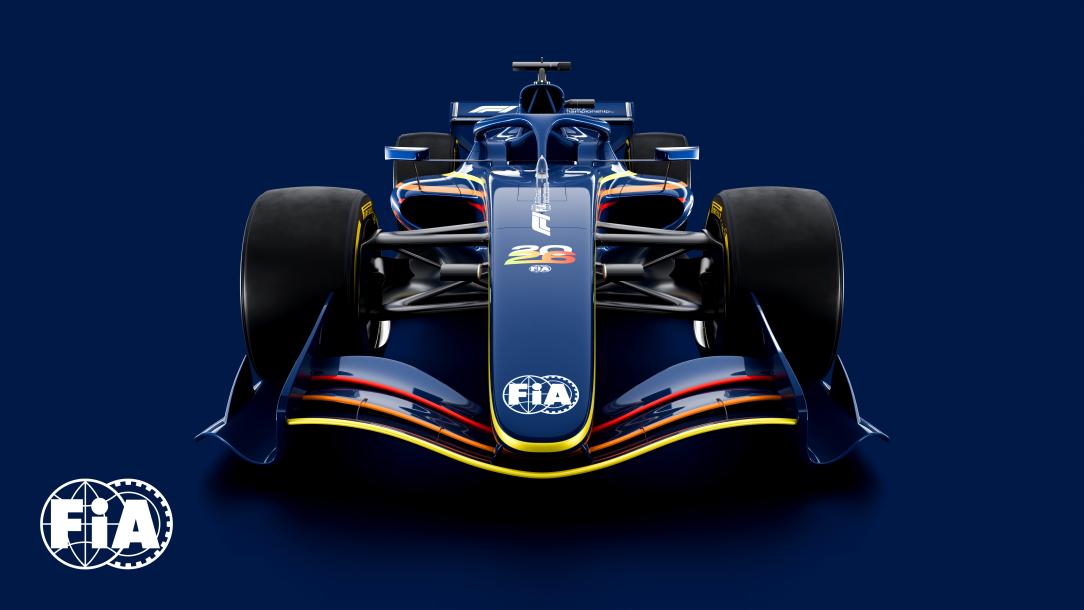
Figure 7. From [17] showing F1 regulations -2026.
3.5. Problems and improvements
Although the front wing design improvements has achieved remarkable results in F1 cars through the years, it still faces many challenges and limitations. As the speed of the car continues to increase and the rules continue to change, the front wing design will also need to be more refined. For example, the 2022 F1 racing rules redefined the shape of the front and rear wing, eliminating the front and rear wing independent end plates, which is not only change the appearance of the vehicle, but also reflects the impact on the design of the front wing. In addition, in order to effectively comb out the huge turbulence caused by high-speed tire rotation, F1 racing cars have added hubcaps and corresponding tire spoiler wings, which further illustrates the adaptive adjustment of front wing design with the increase in car speed and the change of rules. At the same time, with increasingly strict environmental regulations and energy consumption restrictions, the front wing design also needs to pay more attention to energy saving and environmental protection. Future trends in front wing design will focus more on innovation and sustainability. Engineers will continue to explore new design methods and optimizations to further improve the performance of the front wing, but will also use more environmentally friendly materials and processes to reduce the impact of racing on the environment. The current mainstream design scheme still has some problems and challenges when dealing with future track environments and competition needs. For example, in extreme weather and track conditions, maintaining the stability and performance of the front wing has become a key concern for designers. At the same time, with the continuous development of racing technology, reducing manufacturing costs and maintenance difficulty while ensuring performance have also become problems that need to be considered in future front wing design.
4. Conclusion
The front wing can generate downward pressure, enhance front wheel grip, make the car more in line with the ground, ensuring the car's performance and stability during turns, and make the driver safer. It can also effectively manage airflow and enhance aerodynamic efficiency. Moreover, the design of the front wing can also reduce air resistance and interference from the wake on the racing car, thus enhancing following ability. To ensure the safety of racing drivers, the front wing should be strong enough to prevent it from shattering and causing danger in collisions. The front wing design of F1 racing cars must comply with the technical rules established by the International Automobile Federation (FIA). With the continuous advancement of technology and the constant updating of rules, front wing design is also continually innovating and developing. In the future (post 2026), with the continued application of new materials, technologies and regulations, front wing will become more lightweight, efficient and intelligent. This will enable Formula One cars to achieve greater breakthroughs in performance and bring more exciting races to the audience.
References
[1]. Alam M A, Ya H H, Sapuan S M, et al. Recent advancements in advanced composites for aerospace applications: a review. Advanced composites in aerospace engineering applications, 2022: 319-339.
[2]. Broadley P, Nabawy M R. An experimental investigation of Reynolds number effects on the aerodynamics of insect-like revolving wings//AIAA SCITECH 2022 Forum. 2022: 0307.
[3]. Laguna-Canales A S, Urriolagoitia-Sosa G, Romero-Ángeles B, et al. Mechanical Design and Numerical Analysis of a New Front Wing for a Formula One Vehicle. Fluids 2023, 8, 210. https://doi.org/10.3390/fluids8070210
[4]. Martins, D.; Correia, J.; Silva, A. The Influence of Front Wing Pressure Distribution on Wheel Wake Aerodynamics of a F1 Car. Energies 2021, 14, 4421. https://doi.org/10.3390/en14154421
[5]. Granados-Ortiz F J, Morales-Higueras P, Ortega-Casanova J.3D CFD simulation of the interaction between front wheels&brake ducts and optimised five-element F1 race car front wings under regulations. Alexandria engineering journal 2023, 69, 677. https://doi.org/10.1016/j.aej.2023.02.011
[6]. Castro X, Rana Z A. Aerodynamic and structural design of a 2022 Formula One front wing assembly. Fluids 2020, 5, 237.https://doi.org/10.3390/fluids5040237
[7]. Iqbal, Adil & Hu, Tianxiang & Qu, Qiulin. Flow Interaction Between Front Wing & Underbody of Formula One.Thesis for: Master's degree 2022 https://doi.org/10.13140/RG.2.2.26299.28963.
[8]. Tianyu Li. Aerodynamic designs in FORMULA ONE cars. Proceedings of the 2nd International Conference on Computing Innovation and Applied Physics 2022https://doi.org/10.54254/2753-8818/18/20230344
[9]. Xu F, Gao Z, Zhang J. Effects of roadside morphologies and moving vehicles on street canyon ventilation[J]. Building and Environment, 2022, 218: 109138.
[10]. Ydrefors L, Hjort M, Kharrazi S, et al. Rolling resistance and its relation to operating conditions: A literature review[J]. Proceedings of the Institution of Mechanical Engineers, Part D: Journal of Automobile Engineering, 2021, 235(12): 2931-2948.
[11]. Zhang B. A study on aerodynamics of Ultra-efficient cars//Journal of Physics: Conference Series. IOP Publishing, 2023, 2634, 012010. https://doi.org/10.1088/1742-6596/2634/1/012010
[12]. Yang J, He D, Zhang W, et al. Three‐dimensional Geometry and Kinematics of the Changning Anticline in the Southern Sichuan Basin. Acta Geologica Sinica‐English Edition 2022, 96, 1432. https://doi.org/10.1111/1755-6724.14981
[13]. https://worldofspeed.org/blog/what-is-clean-air-in-f1/
[14]. Zhou Tao. Design of Formula Student Car Aerodynamics Kit based on CFD [D]. Chongqing: Chongqing University, 2017.
[15]. DANG TIEN PHUC(Deng Jifu). Numerical Analysis and Experimental Research on Aerodynamic Characteristics of open-wheel F1 racing cars, 2015 https://kns.cnki.net/KCMS/ detail/detail.aspx? Dbname =CDFDLAST 2017&filename=1015734316.nh
[16]. Martins D, Correia J, Silva A. The influence of front wing pressure distribution on wheel wake aerodynamics of a F1 car. Energies 2021, 14, 4421. https://doi.org/10.3390/en14154421
[17]. https://www.fia.com/news/new-era-competition-fia-showcases-future-focused-formula-1-regulations-2026-and-beyond
Cite this article
Hou,X. (2024). Evolution of the Formula One front wing assembly. Theoretical and Natural Science,53,159-168.
Data availability
The datasets used and/or analyzed during the current study will be available from the authors upon reasonable request.
Disclaimer/Publisher's Note
The statements, opinions and data contained in all publications are solely those of the individual author(s) and contributor(s) and not of EWA Publishing and/or the editor(s). EWA Publishing and/or the editor(s) disclaim responsibility for any injury to people or property resulting from any ideas, methods, instructions or products referred to in the content.
About volume
Volume title: Proceedings of the 2nd International Conference on Applied Physics and Mathematical Modeling
© 2024 by the author(s). Licensee EWA Publishing, Oxford, UK. This article is an open access article distributed under the terms and
conditions of the Creative Commons Attribution (CC BY) license. Authors who
publish this series agree to the following terms:
1. Authors retain copyright and grant the series right of first publication with the work simultaneously licensed under a Creative Commons
Attribution License that allows others to share the work with an acknowledgment of the work's authorship and initial publication in this
series.
2. Authors are able to enter into separate, additional contractual arrangements for the non-exclusive distribution of the series's published
version of the work (e.g., post it to an institutional repository or publish it in a book), with an acknowledgment of its initial
publication in this series.
3. Authors are permitted and encouraged to post their work online (e.g., in institutional repositories or on their website) prior to and
during the submission process, as it can lead to productive exchanges, as well as earlier and greater citation of published work (See
Open access policy for details).
References
[1]. Alam M A, Ya H H, Sapuan S M, et al. Recent advancements in advanced composites for aerospace applications: a review. Advanced composites in aerospace engineering applications, 2022: 319-339.
[2]. Broadley P, Nabawy M R. An experimental investigation of Reynolds number effects on the aerodynamics of insect-like revolving wings//AIAA SCITECH 2022 Forum. 2022: 0307.
[3]. Laguna-Canales A S, Urriolagoitia-Sosa G, Romero-Ángeles B, et al. Mechanical Design and Numerical Analysis of a New Front Wing for a Formula One Vehicle. Fluids 2023, 8, 210. https://doi.org/10.3390/fluids8070210
[4]. Martins, D.; Correia, J.; Silva, A. The Influence of Front Wing Pressure Distribution on Wheel Wake Aerodynamics of a F1 Car. Energies 2021, 14, 4421. https://doi.org/10.3390/en14154421
[5]. Granados-Ortiz F J, Morales-Higueras P, Ortega-Casanova J.3D CFD simulation of the interaction between front wheels&brake ducts and optimised five-element F1 race car front wings under regulations. Alexandria engineering journal 2023, 69, 677. https://doi.org/10.1016/j.aej.2023.02.011
[6]. Castro X, Rana Z A. Aerodynamic and structural design of a 2022 Formula One front wing assembly. Fluids 2020, 5, 237.https://doi.org/10.3390/fluids5040237
[7]. Iqbal, Adil & Hu, Tianxiang & Qu, Qiulin. Flow Interaction Between Front Wing & Underbody of Formula One.Thesis for: Master's degree 2022 https://doi.org/10.13140/RG.2.2.26299.28963.
[8]. Tianyu Li. Aerodynamic designs in FORMULA ONE cars. Proceedings of the 2nd International Conference on Computing Innovation and Applied Physics 2022https://doi.org/10.54254/2753-8818/18/20230344
[9]. Xu F, Gao Z, Zhang J. Effects of roadside morphologies and moving vehicles on street canyon ventilation[J]. Building and Environment, 2022, 218: 109138.
[10]. Ydrefors L, Hjort M, Kharrazi S, et al. Rolling resistance and its relation to operating conditions: A literature review[J]. Proceedings of the Institution of Mechanical Engineers, Part D: Journal of Automobile Engineering, 2021, 235(12): 2931-2948.
[11]. Zhang B. A study on aerodynamics of Ultra-efficient cars//Journal of Physics: Conference Series. IOP Publishing, 2023, 2634, 012010. https://doi.org/10.1088/1742-6596/2634/1/012010
[12]. Yang J, He D, Zhang W, et al. Three‐dimensional Geometry and Kinematics of the Changning Anticline in the Southern Sichuan Basin. Acta Geologica Sinica‐English Edition 2022, 96, 1432. https://doi.org/10.1111/1755-6724.14981
[13]. https://worldofspeed.org/blog/what-is-clean-air-in-f1/
[14]. Zhou Tao. Design of Formula Student Car Aerodynamics Kit based on CFD [D]. Chongqing: Chongqing University, 2017.
[15]. DANG TIEN PHUC(Deng Jifu). Numerical Analysis and Experimental Research on Aerodynamic Characteristics of open-wheel F1 racing cars, 2015 https://kns.cnki.net/KCMS/ detail/detail.aspx? Dbname =CDFDLAST 2017&filename=1015734316.nh
[16]. Martins D, Correia J, Silva A. The influence of front wing pressure distribution on wheel wake aerodynamics of a F1 car. Energies 2021, 14, 4421. https://doi.org/10.3390/en14154421
[17]. https://www.fia.com/news/new-era-competition-fia-showcases-future-focused-formula-1-regulations-2026-and-beyond





